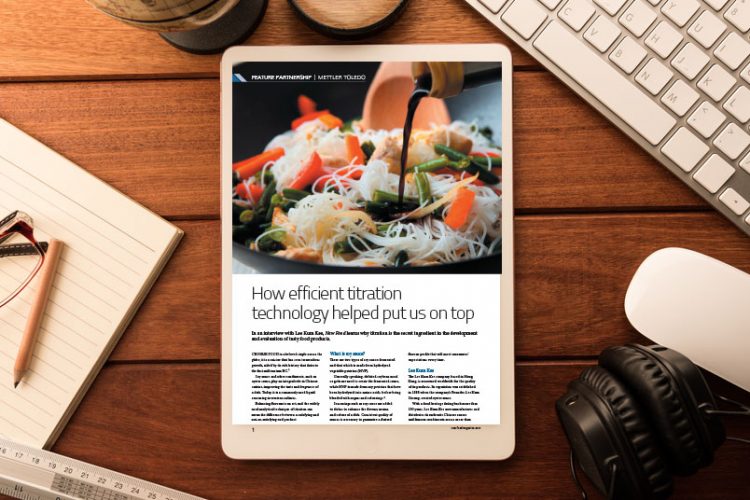Feature Partnership: How efficient titration technology helped put us on top
- Like
- Digg
- Del
- Tumblr
- VKontakte
- Buffer
- Love This
- Odnoklassniki
- Meneame
- Blogger
- Amazon
- Yahoo Mail
- Gmail
- AOL
- Newsvine
- HackerNews
- Evernote
- MySpace
- Mail.ru
- Viadeo
- Line
- Comments
- Yummly
- SMS
- Viber
- Telegram
- Subscribe
- Skype
- Facebook Messenger
- Kakao
- LiveJournal
- Yammer
- Edgar
- Fintel
- Mix
- Instapaper
- Copy Link
Posted: 21 June 2021 | Mettler Toledo, New Food | No comments yet
In an interview with Lee Kum Kee, New Food learns why titration is the secret ingredient in the development and evaluation of tasty food products.


Chinese Food is a beloved staple across the globe; it is a cuisine that has seen tremendous growth, aided by its rich history that dates to the first millennium BC.
Soy sauce and other condiments, such as oyster sauce, play an integral role in Chinese cuisine, improving the taste and fragrance of a dish. Today, it is a commonly used liquid seasoning in western cultures.
Balancing flavours is an art, and the widely used analytical technique of titration can mean the difference between a satisfying and not-so-satisfying end product.
What is soy sauce?
There are two types of soy sauce: fermented and that which is made from hydrolysed vegetable proteins (HVP).
Generally speaking, defatted soybean meal or grits are used to create the fermented sauce, while HVP is made from soy proteins that have been hydrolysed into amino acids, before being blended with sugars and colourings.
Seasonings such as soy sauce are added to dishes to enhance the flavour, aroma and colour of a dish. Consistent quality of sauces is necessary to guarantee a desired flavour profile that will meet consumers’ expectations every time.
Issue
Related topics
Equipment, Flavours & colours, Ingredients, Quality analysis & quality control (QA/QC), Technology & Innovation









